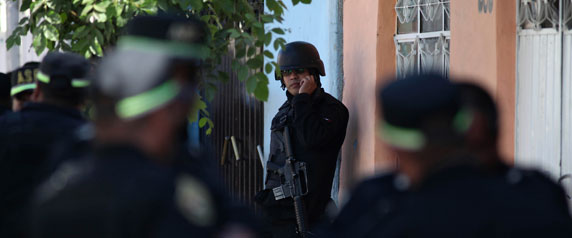
CPJ‘s 2014 annual report, Attacks on the Press, discusses the issues of preserving journalism around the world. I read the chapter “Gunmen Rule Neza and the Press in Outskirts of Mexico City“, which covered the self censorship of the local press as a result of death threats from the Mexican drug cartel.
The journalists are afraid to publish any investigative stories of the crimes committed by the drug cartel. The reporters are threatened if they published anything. If the journalists did have the courage to publish, it is almost impossible to get a full story. This is because they are threatened at the crime scenes. Drug cartel members have lookouts who stalk the scene and report back. Journalists respond by making phone calls to report on the story, but that is close to impossible to accurately cover the story.
“We get a call from citizens that there’s been a murder. . . If we call the police, they say there’s nothing. The ambulance service says there’s nothing. The citizens are watching the police at the scene examining the body or they see the body go into the coroner’s vehicle. The coroner says they have no information. So, there is no story,” a reporter said in the book.
Reporters aren’t the only ones being threatened. Citizens, police and city officials are victims of both extortion and murders. The police officers and government officials are either involved in the cartel or too afraid to stop the crimes. This leaves the citizens and journalists vulnerable.
The impact of the lack of reporting is that the country is unaware of the extensive control the cartel has in Neza and the extensive control the group has over the country. The government officials have claimed that Mexico City has been left untouched by the cartel, but Neza is proof that not even Mexico City is safe. Neza is 10 miles southeast of the center of Mexico City.
“One is on one side of a street with four stray dogs, and the other is 20 feet of concrete away at a stack of broken and scattered plastic beer cases. Don’t ask which side is Neza, which side is technically Mexico City, because it doesn’t matter,” reporter Mike O’Connor writes in the chapter.
Mexico City isn’t aware that the drug cartel isn’t a foreign problem, but right at its back door. The lack of news coverage creates an uninformed community which helps perpetuate the problem, giving the cartel power.
Al Jazeera America President Kate O’Brian said she doesn’t send correspondences into harm’s way without an extensive decision making process. This includes a full assessment of the dangers and how to handle those dangers. O’Brian said she trains her staff to deal with these dangers and sends extra security if she needs to.
I think it is hard for these local journalists to safely report the story to inform the public and this is where international journalists need to step in to help report. They are still in danger, but can at least get out of the country if need be. This report helped me see how dangerous journalism is and how everyone needs to help fight for the freedom of the press.
Reviewed by Krista Kull

No one is exempt from being in danger. Whether you’re a journalist or not. Although our duty is to tell the story, we must think of our safety first and foremost. If we put ourselves in danger, we may never be able to cover more stories if we are injured or killed. I think O’Brien’s choice to use international journalists to cover stories not safe for local journalists to cover is the best alternative to getting the full story.
It’s a similar case in Brazil. Journalists are too afraid to report on serious issues, so nobody is able to learn more about them and the problems can’t be solved. Safety is paramount for journalists; so often stories require journalists to be put in harm’s way, but I’m glad that Kate O’Brian said her crews have safety training before going to a dangerous place and that they take security.
Hi Alexis,
Great presentation of the content, and a very good connection with what Kate O’Brien mentioned in class. Thank you!
Vlad